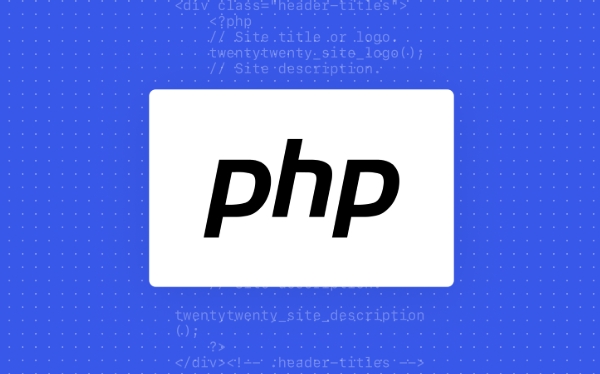Yes, you can run PHP without installing a full web server like Apache or Nginx by using 1. PHP’s built-in development server, 2. online PHP editors, or 3. portable PHP environments; each method is suitable for testing, learning, or lightweight local development. To use PHP’s built-in server, ensure PHP is installed, navigate to your project directory, run php -S localhost:8000, and access it via http://localhost:8000, though note it's not production-ready. Online editors like 3v4l.org, OnlinePHP.io, and Replit allow browser-based coding and execution, ideal for snippets and simple tests but limited in replicating full server environments. Portable solutions such as XAMPP Portable or ServerPact provide self-contained setups that run from a folder or USB stick without installation, offering more flexibility across machines while avoiding system-wide changes. These approaches make running PHP straightforward for basic tasks without requiring a traditional server setup.

You can run PHP without installing a full web server like Apache or Nginx by using built-in tools and lightweight options. It’s simpler than it sounds, especially for testing or local development.

Use PHP’s Built-in Development Server
PHP comes with its own lightweight web server designed for development purposes. You don’t need to install Apache or anything else — just run a command in your project directory.

- Make sure PHP is installed on your system (check with
php -vin the terminal). - Navigate to your PHP project folder.
- Run:
php -S localhost:8000
- Open your browser and go to
http://localhost:8000.
This method works great for quick tests or small projects. Just keep in mind that this server isn’t meant for production use — it's single-threaded and lacks many features of real servers.
Try Online PHP Editors
If you want to avoid messing with local setup entirely, online PHP editors are a good option. They let you write and run PHP code directly in the browser.

Some popular ones include:
- 3v4l.org – Great for testing snippets across different PHP versions.
- OnlinePHP.io – Offers a more complete environment with file support.
- Replit – Create simple PHP projects in a sandboxed environment.
These are perfect for learning, debugging, or sharing code quickly. However, they won’t replicate a full server environment, so they’re not ideal for testing complex apps.
Use a Portable PHP Environment
For a bit more flexibility without full installation, you can download a portable PHP version that runs from a USB stick or local folder.
- Tools like XAMPP Portable or ServerPact offer lightweight packages that don’t require installation.
- Extract them to a folder and run the included start script.
- These often include a mini-server setup, but still don’t need admin rights or deep configuration.
This is useful if you're working on multiple machines or want a self-contained environment without changing system settings.
Running PHP without a traditional server setup is totally doable and pretty straightforward for basic needs. Whether it’s the built-in server, an online tool, or a portable package, there’s a method that fits most situations — no Apache or Nginx required.
The above is the detailed content of How to run PHP without installing a server?. For more information, please follow other related articles on the PHP Chinese website!

Hot AI Tools

Undress AI Tool
Undress images for free

Undresser.AI Undress
AI-powered app for creating realistic nude photos

AI Clothes Remover
Online AI tool for removing clothes from photos.

Clothoff.io
AI clothes remover

Video Face Swap
Swap faces in any video effortlessly with our completely free AI face swap tool!

Hot Article

Hot Tools

Notepad++7.3.1
Easy-to-use and free code editor

SublimeText3 Chinese version
Chinese version, very easy to use

Zend Studio 13.0.1
Powerful PHP integrated development environment

Dreamweaver CS6
Visual web development tools

SublimeText3 Mac version
God-level code editing software (SublimeText3)

Hot Topics
 How do I implement authentication and authorization in PHP?
Jun 20, 2025 am 01:03 AM
How do I implement authentication and authorization in PHP?
Jun 20, 2025 am 01:03 AM
TosecurelyhandleauthenticationandauthorizationinPHP,followthesesteps:1.Alwayshashpasswordswithpassword_hash()andverifyusingpassword_verify(),usepreparedstatementstopreventSQLinjection,andstoreuserdatain$_SESSIONafterlogin.2.Implementrole-basedaccessc
 How can you handle file uploads securely in PHP?
Jun 19, 2025 am 01:05 AM
How can you handle file uploads securely in PHP?
Jun 19, 2025 am 01:05 AM
To safely handle file uploads in PHP, the core is to verify file types, rename files, and restrict permissions. 1. Use finfo_file() to check the real MIME type, and only specific types such as image/jpeg are allowed; 2. Use uniqid() to generate random file names and store them in non-Web root directory; 3. Limit file size through php.ini and HTML forms, and set directory permissions to 0755; 4. Use ClamAV to scan malware to enhance security. These steps effectively prevent security vulnerabilities and ensure that the file upload process is safe and reliable.
 What are the differences between == (loose comparison) and === (strict comparison) in PHP?
Jun 19, 2025 am 01:07 AM
What are the differences between == (loose comparison) and === (strict comparison) in PHP?
Jun 19, 2025 am 01:07 AM
In PHP, the main difference between == and == is the strictness of type checking. ==Type conversion will be performed before comparison, for example, 5=="5" returns true, and ===Request that the value and type are the same before true will be returned, for example, 5==="5" returns false. In usage scenarios, === is more secure and should be used first, and == is only used when type conversion is required.
 How do I perform arithmetic operations in PHP ( , -, *, /, %)?
Jun 19, 2025 pm 05:13 PM
How do I perform arithmetic operations in PHP ( , -, *, /, %)?
Jun 19, 2025 pm 05:13 PM
The methods of using basic mathematical operations in PHP are as follows: 1. Addition signs support integers and floating-point numbers, and can also be used for variables. String numbers will be automatically converted but not recommended to dependencies; 2. Subtraction signs use - signs, variables are the same, and type conversion is also applicable; 3. Multiplication signs use * signs, which are suitable for numbers and similar strings; 4. Division uses / signs, which need to avoid dividing by zero, and note that the result may be floating-point numbers; 5. Taking the modulus signs can be used to judge odd and even numbers, and when processing negative numbers, the remainder signs are consistent with the dividend. The key to using these operators correctly is to ensure that the data types are clear and the boundary situation is handled well.
 How can you interact with NoSQL databases (e.g., MongoDB, Redis) from PHP?
Jun 19, 2025 am 01:07 AM
How can you interact with NoSQL databases (e.g., MongoDB, Redis) from PHP?
Jun 19, 2025 am 01:07 AM
Yes, PHP can interact with NoSQL databases like MongoDB and Redis through specific extensions or libraries. First, use the MongoDBPHP driver (installed through PECL or Composer) to create client instances and operate databases and collections, supporting insertion, query, aggregation and other operations; second, use the Predis library or phpredis extension to connect to Redis, perform key-value settings and acquisitions, and recommend phpredis for high-performance scenarios, while Predis is convenient for rapid deployment; both are suitable for production environments and are well-documented.
 How do I stay up-to-date with the latest PHP developments and best practices?
Jun 23, 2025 am 12:56 AM
How do I stay up-to-date with the latest PHP developments and best practices?
Jun 23, 2025 am 12:56 AM
TostaycurrentwithPHPdevelopmentsandbestpractices,followkeynewssourceslikePHP.netandPHPWeekly,engagewithcommunitiesonforumsandconferences,keeptoolingupdatedandgraduallyadoptnewfeatures,andreadorcontributetoopensourceprojects.First,followreliablesource
 What is PHP, and why is it used for web development?
Jun 23, 2025 am 12:55 AM
What is PHP, and why is it used for web development?
Jun 23, 2025 am 12:55 AM
PHPbecamepopularforwebdevelopmentduetoitseaseoflearning,seamlessintegrationwithHTML,widespreadhostingsupport,andalargeecosystemincludingframeworkslikeLaravelandCMSplatformslikeWordPress.Itexcelsinhandlingformsubmissions,managingusersessions,interacti
 How to set PHP time zone?
Jun 25, 2025 am 01:00 AM
How to set PHP time zone?
Jun 25, 2025 am 01:00 AM
TosettherighttimezoneinPHP,usedate_default_timezone_set()functionatthestartofyourscriptwithavalididentifiersuchas'America/New_York'.1.Usedate_default_timezone_set()beforeanydate/timefunctions.2.Alternatively,configurethephp.inifilebysettingdate.timez






